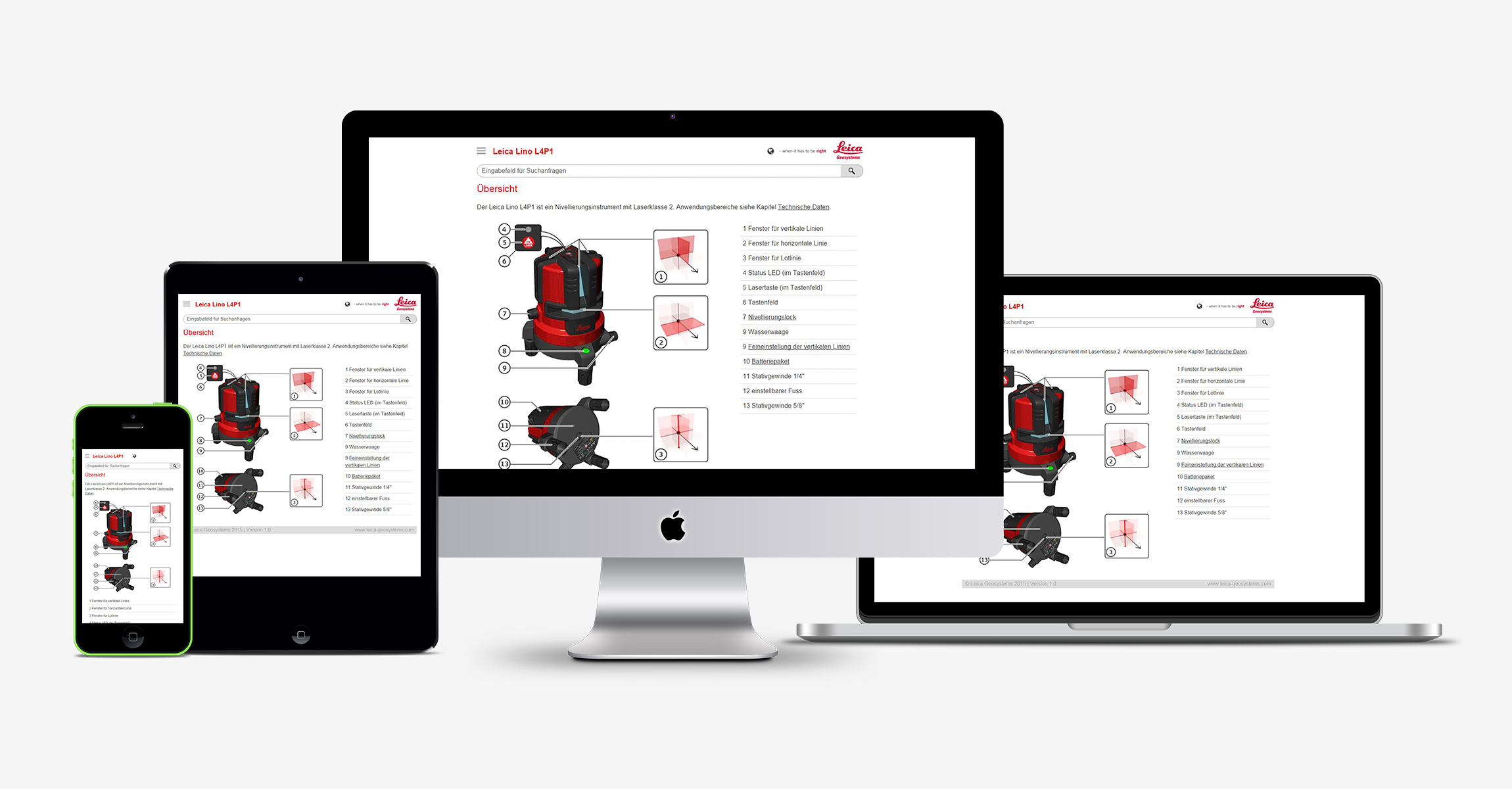Your customers will love our mobile documentation
smartphones and tablets have become commonplace very quickly. No less than 69 percent of Swiss citizens, or about 4.3 million people, own a smartphone and use it every day. As a result of progressive digitalisation, the publication of digital content via different channels is increasingly common. This poses the question as to whether, and how, Technical Communication should use these new channels.
Cross-media publishing
It is probably going to take another few decades until printed operating manuals are completely replaced by mobile versions. Experience has shown that in cases where an operating manual was only provided online, a PDF version was nevertheless required. The state authorities still request that machine manufacturers produce instructions in PDF form, even though the Machinery Directive considers mobile documentation to be sufficient from a legal point of view. The art consists in publishing the existing content on different platforms without much additional cost. Content such as text, illustrations and diagrams should only be recorded once at a central location. From this single source it is then possible to issue manuals for different platforms, such as desktop, mobile or print. This saves much work and keeps costs down It is important to structure the existing information well, right from the beginning. It must be split into plausible information components so that they can be used in modular fashion. A good concept is the key to success.
XML-based content management systems that have been specially created for this purpose are used to set specific formats. This makes it possible to produce content which, as an example, is only intended for publication in print. Conversely, it is possible to hide online content, such as videos or animations, for the print version.
How to create added value with digital documentation?
Devices such as smartphones and tablets have genuine advantages. They are small, easy to manage, and can be taken everywhere. Most people have their own smartphone that they can access at any time. It is quite possible for a large manual to consist of several hundred pages. Who is keen on carrying this heap of paper around with them?

Praxisbeispiel Leica
Mobile access to these documents is a great help in the field. Tablets and smartphones have new functions that can be usefully employed for technical documentation. For example, the camera of the device can be used to upload a QR or barcode. This is an easy and quick way for the user to access relevant technical documents. By contrast to a printed version, mobile documents can easily be searched. This helps to find content quickly and saves the user the time and effort involved in searching through complex tables of content. The presentation of documents is optimised for various devices. For example, images and text as well as the navigation are adjusted to the respective size of screen. This makes optimum use of the size of the display screen. Technical documents that are available online can be updated very easily. This is an enormous cost advantage compared to a printed version.
How do we resolve these issues?
When we want to publish content via several media it is often necessary to re-edit the content to make publication on these platforms possible. It makes sense to split extensive technical illustrations into smaller units for mobile devices. This means that even technically complex processes can be conveyed via a smartphone.
Conclusion
Mobile documentation has a firm place in technical communication. The target group expects to be able to access documents online or via an app. The demand for mobile access to documents is expected to increase in the years to come. With the new, specially created software tools, it is now also possible to produce mobile documentation at a reasonable cost.
“We would be happy to make you a comprehensive proposal and to give advice on a non-binding basis.”

Contact & Information:
Markus Tobler
Head of Media
+41 71 727 98 03
m.tobler@dogrel.com

Infotrend June 2016